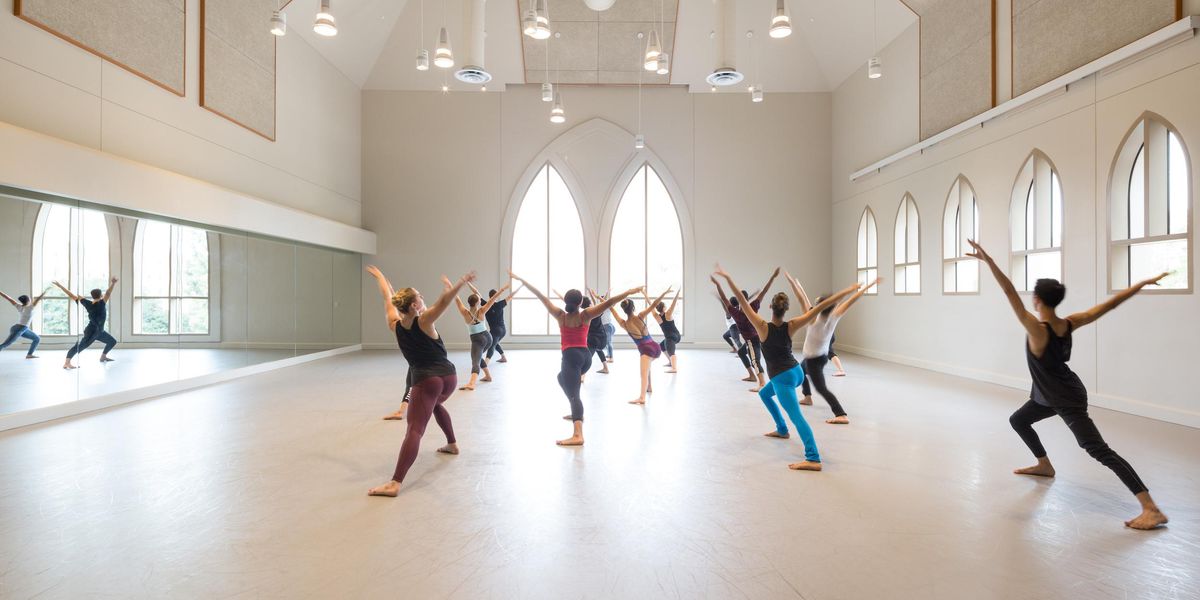Your Body: Nervous Energy
Anxiety can boost your performance.
Laura Halzack remembers she felt the usual symptoms when she bourréed across the stage in Paul Taylor’s De Sueños (of dreams) during an opening night gala. “It was the first solo Paul had ever created on me. I was alone onstage with slow développés,” says Halzack, a member of the Taylor company since 2006. “I felt very nervous and shaky. But being nervous is a good thing. It shows how passionately we feel about what we do.”
Instead of trying to overcome her anxiety, Halzack went with it, and found she nailed all the difficult passages without a hitch. Being nervous may be one of the most misunderstood physical states. Going out onstage to perform is not an ordinary human activity, so the body doesn’t treat it as such. We need a surge, an altered state, all of which have some physical consequences that many find can actually help their performances.
Blood, Sweat, and Butterflies
A lot has been written about the way the body reacts before an extraordinary effort. “Butterflies result from excess stomach acid as the body shifts its energy from the digestive system to where it’s needed in the musculoskeletal system,” says John Eliot, Ph.D., author of Overachievement. At the same time, the heart beats faster to get more blood through the arteries, carrying nutrients to the muscles and brain cells. Like Halzack, some performers experience shaking in hands, feet, or knees, because motor signals go from the cortex to the extremities to prepare the body for action. Sweating happens because the body is trying to prevent overheating.
Most of the body’s reactions occur because adrenaline floods the system and triggers them. “Adrenaline, a neurotransmitter, is a hormone released by the adrenal gland,” says Lynda Mainwaring, Ph.D., a performance psychologist at the University of Toronto. “It stimulates the sympathetic nervous system, which in turn stimulates the flight-or-fight response in the body.”
For dancers, it’s a tricky balance. “There’s something called ‘optimal level of arousal,’ ” Mainwaring says. “Dancers need to be in their ideal zone for their best performance. Too little is not helpful, too much is detrimental. Achieving that balance is something we can practice.” To that end, Mainwaring offers some visualization suggestions. “Close your eyes, take a long, slow, deep breath and then see, feel, and hear yourself performing your best. Imagine how you move dynamically and fluidly across the stage. Feel yourself optimally energized for the dance.”
Embrace Your Jitters
Eliot says performers can reframe the experience of being nervous. “Anxiety is a cognitive interpretation of the body’s response,” he says. He encourages performers to become acclimated to their bodies in a state of arousal. “Dancers need to pay attention to the positive aspect of nerves,” he says. “The more they can understand what’s happening, the less they will intimidate themselves. Think of the way you are feeling as like having an energy bar.”
Many dancers will testify that their worst performances occurred when they were not nervous. Halzack had problems during one performance of Taylor’s Private Domain.“It was our third performance of it, and I was very relaxed before we began,” she says. “It was the only time I ever blanked out onstage and ended up repeating a phrase. I know now, the moment I don’t feel nervous, it’s the time to get off the stage and hang up my tights.”
Nancy Wozny writes about health and the arts from Houston.
Soothing Snacks
Dancing on an empty stomach can create its own problems. Even if you feel too nervous to eat, your body needs energy to perform. Stick to easy-to-digest foods, says Derrick Brown, who works as a nutrition advisor to Dutch National Ballet.
–He recommends carrot sticks, apples, or low-fat yogurt an hour before a show.
–Water with some drops of lemon juice not only can help settle a queasy stomach, but it has essential minerals such as calcium, magnesium
and potassium.
Think Pink
Want to boost your post-performance recovery? Eat more foods with astaxanthin. It’s the reddish pigment found in strains of algae, phytoplankton, and plants, and it’s what gives salmon its pink color. In some studies, its anti-inflammatory properties have been linked to stronger performance and faster recovery. Astaxanthin is available in health food stores in capsules and liquid.
Photos from iStock.




